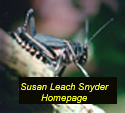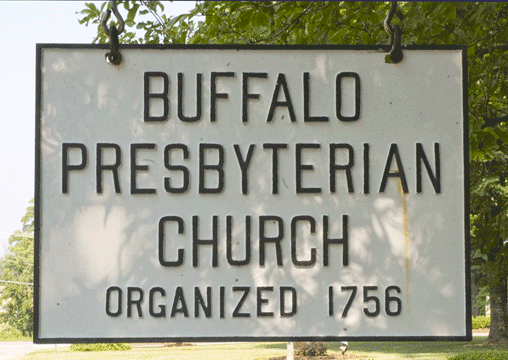Menu Items




![]()
Generation 10
Generation 1 |
Generation 2 |
Generation 3 |
Generation 4 |
Generation 5 |
Generation 6 |
Generation 7 |
Undisclosed |
Undisclosed |
Undisclosed |
Terry Donnell Sharpe |
Mary Elizabeth Donnell |
Irvin Cunningham Donnell |
Hannah Cunningham |
Generation 8 |
Generation 9 |
Generation 10 |
Mary Mitchell |
Adam Mitchell Jr. |
Adam Mitchell |
430. Mary ___ (Married Adam Mitchell (#429))
Born: ? of Unknown Father (#859) and Unknown Mother (#860)
Died: ? Mary is buried at Buffalo Presbyterian Church Cemetery. (Source: Page 77 of Buffalo Presbyterian Church and Cemetery Greensboro, North Carolina compiled by Raymond Dafau Donnell, copyright 1994, lists Mary as being one of the people buried in the cemetery for which a grave marker no longer exists. Page 71 of this document states, "Specific sites are no longer known. Burials were in the center section, at the old section of the cemetery. Determination of those listed is based in part on church activity; records of Rev. Samuel Meek Rankin and William Calvin Rankin, researchers, now at the Southern Historical Collection at Wilson Library, UNC Chapel Hill, NC, located in file 3717. Record searches of the compiler; Buffalo Presbyterian and Bethel Presbyterian Church session records of Elders; knowledge of senior Buffalo Church members, as expressed to members of the cemetery committee, and family tradition as made known.")
[Her siblings, if any, are unknown.]
Miscellaneous:
Mary and her husband were members of the Nottingham Colony. The following is quoted from History of Buffalo Presbyterian Church and her People, Greensboro, N.C. by Rev. S. M. Rankin pgs 14 & 15 about the Nottingham Colony :
"This community was first settled by members of the Nottingham Colony, a company organized and formed in the bounds of the old Nottingham Presbyterian Church at Rising Sun, Md. That church was in Lancaster County, Pa., when our ancestors left there, and until the line between Maryland and Pennsylvania was changed in 1767.
The Nottingham Company sent out agents and had surveyed and secured rights from Earl Granville to thirty-three plots or sections of six hundred and forty acres to the section, ‘lying and being on the waters of North Buffalo and Reedy Fork Creeks.’ That this company could secure so large a tract of land, 21,120 acres, in a body shows there were no settlers in this community before this colony came. The fact that there were thirty-three plots laid out for the company would suggest that there were thirty-three families in the company, and there may have been. However, all did not take their plots, and others secured more than one plot. Others, who were perhaps members of the company and not prepared to come with the colony, came a little later and located on their sections in the bounds of the colony. There must have been about nineteen families in the company that actually located here.
Earl Granville did not sell the land outright to them, but retained an interest in it. The contract was more like a perpetual lease. They paid only a nominal sum to bind the trade, and after that they were to pay an annual rent of three shillings per hundred acres; and they were required to make improvements on the land. The rent was to be paid in two equal semi-annual installments, one ‘on the day of the feast of the annunciation of the Blessed Virgin Mary,‘ and the other ‘on the day of the feast of Saint Michael the Archangel.’ These days must have been in the spring and fall, for other deeds called for the payment on the 25th of March and the 29th of September. All the deeds did not have the rent and other conditions specified, but they must have been in the first contract, which is not on record, and well understood, for in no case was the cash payment more than a few shillings. Some of the grants specified that ‘if the rent is unpaid and behind six months, then the contract is void and of none effect.’ Other grants specified that the owners were to have ‘the privilege of hunting, hawking, fishing and fowling.’
The exact date of the coming of this colony cannot now be established. Dr. Caruthers relates that about the time Dr. Caldwell began to study for the ministry, or soon thereafter, this company was being organized and making arrangements to come to North Carolina, and that they made a tentative agreement with him that when he obtained license to preach he would come and be their pastor. This does not fix the exact date of their coming. Dr. Caldwell decided to study for the ministry in the latter part of 1750. It may have been 1751 when this agreement was made. They may have come here in 1752 and failed to get their grants of land until 1753. However, all things considered, it appears to the writer that they did not come until the summer of 1753. The deeds are all dated December, 1753. After they had decided to come and the company organized it would have required some time for them to collect all the necessary equipment and provisions to set up housekeeping and to begin farming in a wilderness.
Some came bringing large families with them, others were newly married couples seeking to establish new homes in a new place, and some were young men trying to find a suitable location before getting married. Some were the children of the first settlers in Pennsylvania, and some were new immigrants from ireland who were not permitted to buy land in Pennsylvania. "
Page 22 lists the members of the Nottingham Colony: “James Barr, Thomas Beals, George Black, John Blair, John Cummings, John Cunningham (#213), Robert Donnell [probably Robert Donnell #209's uncle],Thomas Donnell [probably Robert Donnell #209's uncle], Hugh Foster, John McClintock [possibly #212's father], James McQuiston, Robert McQuiston, Thomas McQuiston, Adam Mitchell (#429), Robert Mitchell (#429's brother), John Nicks, Robert Rankin, Samuel Scott and Andrew Wilson.”
Page 19 states, "The first preaching service in this community, of which we have any record, was by Rev. Hugh McAden, a missionary sent out from Pennsylvania, and it was on August 21, 1755 at the home of Adam Mitchell [and Mary], near where the church now stands."
Page 26 states:
“Adam Mitchell secured his grant on the North Buffalo. The church is located on a part of his grant. His wife was Mary, and their children, so far as their names appear on any record were John, Adam, Jr. (#215), and Jennet. John’s name does not appear on any record after the War; Jennet married her first cousin, Adam Mitchell, son of Robert; Adam, Jr. married Agnes, and their children were Samuel (1771-1851), John (1773-1841), Adam (1776-1841), Mary and Charlotte. Of the children of Adam Mitchell, Jr. (#215), Samuel married Margaret, daughter of John McMurray, Sr, in 1795; Adam married first Isabella Gwyn, and second Elizabeth Allen; Mary (#108) married first John McMurray, Jr., and second John Cunningham, Jr. (#107); Charlotte married first Robert Ervin [brother of Mary Ervin (#106 )] and second Latham Donnell; John never married.”
Contact person for this website is Susan Snyder: susanleachsnyder@gmail.com
